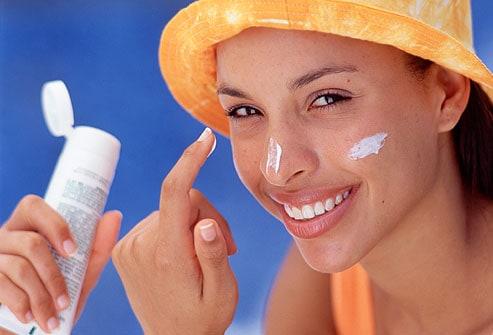Even if time stood still, the sun, by itself, could cause ageing of the skin.
Exposure to the sun leads to sun tan, sun burn and many other effects. The skin is exposed to harmful ultraviolet rays of the sun, which has several long-term effects, like early formation of lines and wrinkles on the skin.
The skin must be protected with a broad-spectrum sunscreen, which provides protection from both UV-A and UV-B rays of the sun. What are UV rays? The sun gives off ultraviolet rays. We divide them into categories based on the wavelength. There are UV-A, UV- B and UV-C rays. Of these, UVC rays are almost completely absorbed by the ozone layer and do not affect the skin. UVB affects the outer layer of skin and is mainly responsible for sunburns. It is the most intense between the hours
Sun exposure can also cause loss of moisture from the skin. However, most sunscreens have built-in moisturizers. So, it is not necessary to apply both moisturizer and sunscreen, unless the skin is very dry.
So what is the answer? At the moment, physical protection is the answer. This can be done by applying a broad-spectrum sunscreen. A sunscreen is a product which forms a protective cover between the skin and the sun’s rays, while a broad-spectrum sunscreen is one which provides protection from both UV-A and UV-B rays of the sun. Both UVA and UVB radiation can cause skin damage, including premature ageing signs.
The SPF also must be considered before selecting the sunscreen. For most skins, SPF of 20 to 25 should be adequate. However, sun-sensitive skins that are prone to allergic reactions, redness, or dark spots and patches, should opt for a higher SPF of 40 and above. Your sunscreen should be according to skin type. Sunscreens and sun -blocks are available in both lotion and cream forms. If the skin is very dry, you may apply the sunscreen, wait for a few minutes and then apply a moisturizer, or apply a sunscreen cream. A normal to oily skin may need an oil-free sunscreen gel, so that the pores do not get clogged and lead to acne.
You may ask, “What is the difference between Sun-blocks and Sunscreens?” Sun-block contains ingredients that act as a barrier between your skin and UV rays by reflecting them, while a Sunscreen absorbs the UV rays before they can damage the skin’s inner layer. A sun-block product may leave a whitish residue or effect, as one sees on sportsmen and athletes.
As already mentioned, sun exposure can cause loss of moisture from the skin. However, most sunscreens have built-in moisturizers. It is essential to apply sunscreen, not only on the face, but also on all exposed areas. The back of the neck and arms are extremely vulnerable to sun damage too. The sunscreen should be applied about 20 minutes before sun-exposure. If you happen to be in the sun for more than an hour, you should re-apply the sunscreen. Try to avoid sun-exposure between noon and 3 p.m. Remember to apply sunscreen while swimming, holidaying by the sea or in the hills. Reflective surfaces, like water and snow actually increase the effects of UV rays.
Remember, that even if Time stood still, the sun, by itself, can cause visible ageing signs on the skin.

